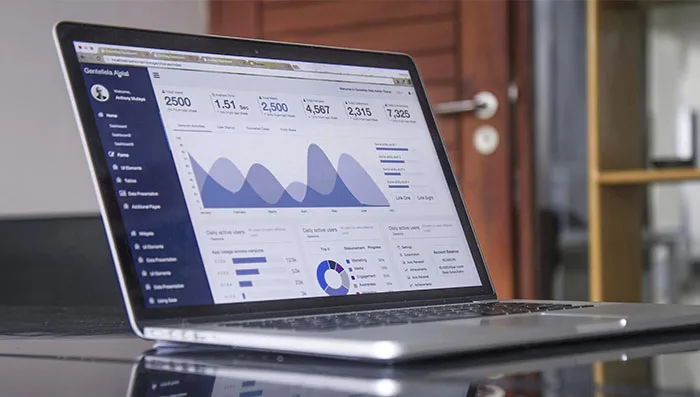Home » Macro Economic Overview » Retail Sales ex. Auto
Retail Sales ex. Auto
Total Sector Spending
Overall spending trends across an industry sector
What's the story behind the data?
Facteus’ real-time view of retail ex-auto spend reveals a consumer base that is tactically adaptive—strategically spending when confident and holding back when uncertain. Despite policy and economic headwinds, spending resilience is guided by channel (eCommerce), cohort (Gen Z), and calendar.
These signals are reinforced by external benchmarks:
- US Census (MARTS) reports show retail trade volatility and nonstore strength (+8.3% YoY in May)
- Walmart and Amazon earnings emphasize eCommerce resilience and margin pressures from tariffs.
- Target reflects discretionary fragility — a theme consistent with Gen X and high-income pullbacks in our data.
In sum: Retail is alive, but bifurcated. Core strength comes from younger, lower- to middle-income consumers in the central U.S., with digital channels leading the way. Strategic execution must reflect this asymmetry.
Strategic Takeaways
FP&A / Strategy Teams
- Embrace volatility: Monthly swings in spending (e.g., peaks in April, softness in February and June) suggest the need for nimble planning and real-time adjustments.
- Segment by generation and income: Gen Z and <$100K consumers are driving most of the growth; high-income shoppers are pulling back. Shift promotion calendars accordingly.
- Regional activation is key: Strength in the Midwest and South provides a target for regional demand gen, while the Northeast continues to underperform.
- Optimize AOV and SKU mix: Large baskets are holding in some segments (e.g., nonstore retail, home categories); bundle and price intelligently to maximize revenue per transaction.
- Plan for policy shocks: Anticipate impacts of tariffs and trade policy changes that could pressure price-sensitive shoppers. Retailers need pricing models that absorb or pass through volatility.
- Double down on digital: eCommerce is outperforming, particularly among Gen Z. Ensure inventory, delivery, and CX are optimized for nonstore transactions.
Marketing and Brand Teams
- Gen Z is your growth engine — campaign creative should lean into cultural cues, urgency, and digital fluency.
- Segment campaigns by region — Midwest and South are spending; Northeast is not.
- Promotional cadence matters — time your ad pushes to coincide with peak seasonal lift in April and early summer.
- Don’t assume affluence = demand — High earners are pulling back; <$100K cohorts are more engaged. Target based on behavior, not just income.
- Own eCommerce storytelling: Gen Z’s channel loyalty is rooted in experience, not price. Creative should emphasize seamlessness, convenience, and identity alignment.
Investors
- Watch for seasonal alpha: April remains a consistent pop in retail spend — align retail-heavy exposure to this cycle.
- Underweight discretionary sectors tied to Gen X and high earners — they’re showing the most pronounced pullbacks.
- Overweight brands with Midwest/Southern footprint and Gen Z loyalty. These are your margin leaders in current macro.
- Monitor AOV stability across channels as a resilience signal — particularly in eCommerce and food categories.
- Track retail earnings against cohort signals: Facteus reveals divergences (e.g., Gen Z vs. Gen X) that may explain surprises in top-line performance.
Policy Makers
- Target Northeast consumer support — it remains the softest region.
- Gen X fatigue is a red flag for middle-aged household spending. Support may be needed for this demographic.
- Digital access matters: Nonstore channels are outperforming — policies that promote access to eCommerce may help rural or underbanked communities.
- Watch income bifurcation: <$100K consumers are surprisingly resilient — but may also be overextending. Monitor credit risk and consumption stress.
- Tariff clarity matters: Retailer feedback suggests tariff chatter alone can chill spending. Stable trade policy = stable retail sentiment.
Top Brands by Market Share
Leading brands ranked by market share within sector
Trends + Insights
Tax-refund “slingshot”
The Feb bust (-1.9 %) → Apr boom (+6.6 %) mirrors refund disbursements; expect a condensed replay next year if filers front-load returns again.
Millennial discretionary fatigue
Retail’s core 28- to 43-year-olds cut hardest—likely a mix of student-loan payments resuming and housing-cost pressure. Watch categories that over-index to this cohort (home décor, mid-tier apparel).
Boomer power re-emerges
Their +5-6 % pop is the strongest since mid-2022, reflecting wealth-effect confidence from market highs and CD yields. High-margin specialty and travel verticals stand to benefit.
High-income caution, not collapse
$150 K households are still positive, but growth is running at ~⅓ of Boomers’ pace. They’re delaying, not canceling—expect pent-up demand if macro clouds clear.
“Donut hole” weakness
The $75-100 K tranche is now the worst performer—traditionally the retail workhorse. That signals erosion of pandemic-era savings and hints at credit-card balance stress.
Top Brands by AOV
Leading brands ranked by average order value within sector
This macro sector analysis provides detailed insights into economic trends and consumer behavior patterns. The visualizations below are derived from real-world transaction data and economic indicators.
Unlock additional content
Get immediate access to the full data set.
Sector Spending by Income Bracket
Industry sector spending patterns by household income level
Sector Spending by Generation
Industry sector spending patterns by generational cohort
Ready to Get Started?
Discover how to access personalized data and insights in a one-on-one session with our team!




